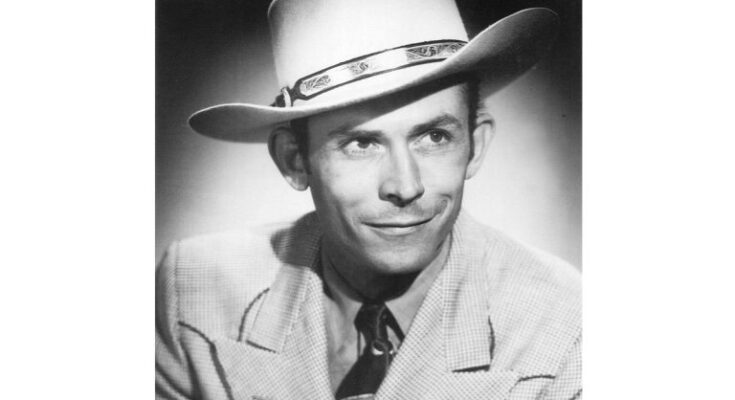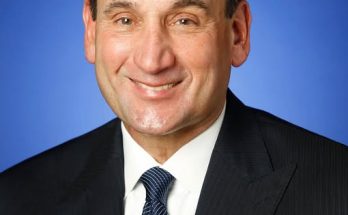Born on March 23, 1934, Charles Carr grew up in Montgomery, Alabama—a city steeped in the rhythms of southern life. His father ran a local taxi service, which not only provided livelihood but also built relationships within the community, including with those in the Williams family (latimes.com). Charles imbibed a strong work ethic early, often helping with the family business.
By 1952, he was an 18-year-old freshman at Auburn University, balancing academia with part-time work to support his education (gq.com). Known to be diligent, respectful, and ambitious, Charles embodied the promise of youth in the American South.
Charles wasn’t a random choice to drive Hank Williams—it was deeply personal. He had “known Hank most of my life,” Carr later shared (latimes.com). Their shared roots in Montgomery and his father’s taxi association meant that Hank trusted the Carr family.
This trust became pivotal when Hank requested Charles’s presence to chauffeur him from Montgomery to a New Year’s Eve concert—a request Charles accepted, in part to support himself through college (latimes.com).
On the afternoon of December 30, 1952, Hank and Charles set out in Hank’s Olympic Blue 1952 Cadillac Series 62 convertible, leaving Montgomery bound for Charleston, WV, and then Canton, Ohio (en.wikipedia.org). Accompanying them in the car were Hank’s pain, medications, and aching ambition.
Hank, plagued by a chronic back injury, had already taken a morphine shot before departure and carried chloral hydrate, a sedative that could slow the heart (latimes.com, latimes.com). Despite this, he remained focused on performing.
Weather foiled their plane plans. After reaching Knoxville, they checked into the Andrew Johnson Hotel at 7:08 p.m. (en.wikipedia.org).
There, Hank’s health plummeted. He suffered hiccups, convulsions, and complete exhaustion. Hotel porters had to carry him into his room, and a local doctor injected morphine + vitamin B12 (en.wikipedia.org). Carr ordered steak dinners, ate his own, while Hank barely touched his (greenvilleadvocate.com).
By 10:45 p.m., Hank was unconscious. Porters again helped load him into the Cadillac. Night cloaked them as they resumed the journey northward (greenvilleadvocate.com).
They traversed Highway 11W, passing Bristol. Carr described stopping at a 24/7 diner, inviting Hank for food, but Hank simply wanted to sleep (sandmountainreporter.com). This terse moment reflected Hank’s profound fatigue.
Drivers often change on long trips. Reports—particularly Hank Williams’s daughter Jett—suggest two additional men joined the journey: hired relief driver Donald Surface and Hank’s personal doctor, Toby Marshall (aka “Dr. Lemon”) (savingcountrymusic.com).
However, Carr maintained he and Hank were the only two in the Cadillac at the fatal end (savingcountrymusic.com). While accounts vary, Carr’s version remained consistent: he discovered Hank unresponsive and took him to a nearby hospital .
In the early hours of January 1, 1953, Carr stopped for gas near Oak Hill, West Virginia (or Bluefield, per some reports) (en.wikipedia.org). Attendant or Surface exclaimed: “I think you’ve got a problem”—Hank was dead (en.wikipedia.org).
Carr felt his passenger’s cold, rigid hand under a blanket—he knew immediately (gq.com). He drove to Oak Hill General Hospital, where Hank was pronounced dead around 7 a.m., with autopsy citing acute right‑ventricular heart failure, likely triggered by his medications and health (savingcountrymusic.com).
That November, Carr phoned Hank’s mother, Lillie Williams. She said one of her final words was, “Don’t let anything happen to the car.” (latimes.com) This anecdote highlighted Williams’s devotion—even in crisis.
For decades, Carr remained remarkably quiet about that harrowing night. His son, Charles “Lands” Carr, recalled, “When he was younger, he didn’t have an interest in being defined by that moment in his life” (latimes.com).
Instead, he focused on finishing at Auburn, joining the military (serving in Europe), and later building a career in investment and real estate in Montgomery, Alabama (latimes.com). He married Jeannine King, had children (Scott, deceased; Charles Lands), stepchildren, grandchildren, and a great-granddaughter (latimes.com).
But Carr never fully distanced himself from that night: he owned the blue Cadillac’s instruments—a pair of cowhide gloves gifted by Hank, and a framed poster promoting a concert they never reached (latimes.com).
In later years, Carr forged a deep bond with the Hank Williams Museum in Montgomery. The museum received the iconic blue Cadillac as a centerpiece, preserving both its beauty and tragedy (latimes.com).
Museum director Beth Petty praised Carr’s humility and kindness to fans: “He was always kind to fans of Hank,” she said (timesleader.com). Charles shifted from reticence to taking pride in nurturing Hank’s memory, making rare public appearances and conducting interviews that brought authenticity to the lore .
In 2007, Carr sat behind the wheel of that very Cadillac, his presence a poignant bridge to history (chron.com).
Over time, narratives about that last ride were muddled by myth. Some claimed Hank died in the Knoxville hotel room and was merely transported postmortem, or that multiple men tampered with the car .
Carr consistently corrected misconceptions. He asserted he and Hank were the only ones inside the Cadillac at Oak Hill, and that no foul play occurred . He stressed that he stopped at a gas station when he discovered something was terribly wrong—not that Hank was in an off‑limits morgue or elsewhere .
Although accounts differ—particularly about Donald Surface’s role or how Toby Marshall arrived—Carr’s testimony remains the most direct (savingcountrymusic.com).
Hank Williams’s death sparked an immediate wave of grief. His body was escorted back to Montgomery in a silver casket. At his January 4 funeral, 15,000–25,000 people paid respects, offering an emotional outpouring that exceeded even pre‑Civil War events like Jefferson Davis’s inauguration (en.wikipedia.org).
Songs like Ernest Tubb’s “Beyond the Sunset” and Roy Acuff’s “I Saw the Light” echoed in the Montgomery Auditorium, where over 2,700 mourners gathered (en.wikipedia.org).
Carr watched from the wings—witness to history, yet always returned to his own life of service, humility, and love .
Hank Williams is considered one of the greatest figures in country music. His death at 29 froze him in time—an iconic spirit of youthful genius (latimes.com).
Carr’s presence that night was critical. His eyewitness accounts grounded the legend in human experience—of a young driver facing uncertainty, responsibility, and tragedy on a dark highway. His Carey provided direct testimony during interviews from 2002 to 2009 .
Charles Carr passed away on July 1, 2013, after a brief illness, aged 79 (latimes.com).
At the time, he was described as a retired investor, a beloved family man, and a humble steward of a critical piece of musical history (inquirer.com).
Even then, Beth Petty emphasized his generosity to fans and refusal to profit from fame . He is survived by his wife Jeannine, son Charles Lands, stepchildren Jennifer & Donald, grandchildren, and a great-granddaughter (latimes.com).
Carr lived a life defined not by fame, but by character:
- Duty: He honored Hank’s final wish—protecting the Cadillac until entrusted to the museum (timesleader.com).
- Humility: He refused to exploit this tragic historical moment for personal gain—even while owning collectibles of sentimental value .
- Honesty: His consistent narratives corrected the legend, helping posterity separate myth from fact .
- Stewardship: Through the Hank Williams Museum, he helped preserve the artist’s memory and ensure his music remained accessible.
Carr preserved the humanity behind a legend. His story reminded fans that Hank Williams was vulnerable, ill, and human—not an untouchable icon.
Living with traumatic memory is no small thing. Carr never sensationalized his experience. His restraint honored Hank’s legacy and spoke volumes of his character.
Carr’s life reflects core southern virtues—loyalty, responsibility, modesty, community service. He drove a grateful carpool, served his country, and built a life rooted in integrity.
Country music, like all culture, is built on countless interwoven stories. Carr may not have held a guitar or penned a song, but he played a crucial role in preserving Hank’s legacy and narrative truth.
- Annual pilgrimages to Oakwood Cemetery and the Hank Williams Museum continue. Carr’s contributions are remembered through memorial plaques and story exhibits.
- Academic and media works—books, documentaries, articles—routinely cite Carr’s testimony, giving authenticity to musical lore.
- Fans and musicians alike pay tribute to Carr’s humility, recognizing that he honored Hank not for fame, but for friendship and duty.
Charles Carr’s story illustrates that sometimes the most profound contributions come from those behind the wheel—not in the spotlight. On a frigid January night, an 18‑year‑old Auburn freshman realized he was at a crossroad of history. He acted with calm, courage, and clarity—not just driving a car, but driving a momentous journey toward cultural memory.
Though his name may not be widely known, Carr’s choices echo across generations. He teaches us about responsibility in crisis, humility in exposure, and honoring another’s story with dignity. For all that, he deserves our respect and remembrance—alongside the man he carried into legend.
Charles Carr reminds us that legacy isn’t just made by songwriters and singers, but by those who carry history forward. In honoring his life, we honor a young man who made a choice in a moment of vulnerability—and, in doing so, handed down the story of Hank Williams not as myth, but as remembered truth. His influence echoes in every pilgrimage to Oakwood Cemetery, every fan’s tear, every song replayed. His drive was more than miles—it carried history itself.
- L.A. Times obituary, 2013 Wikipedia: Death_of_Hank_Williams
- Pollstar & Times Leader obituaries Houston Chronicle & Chron articles
- Sand Mountain Reporter timeline
- Saving Country Music insights with Jett Williams quotes



